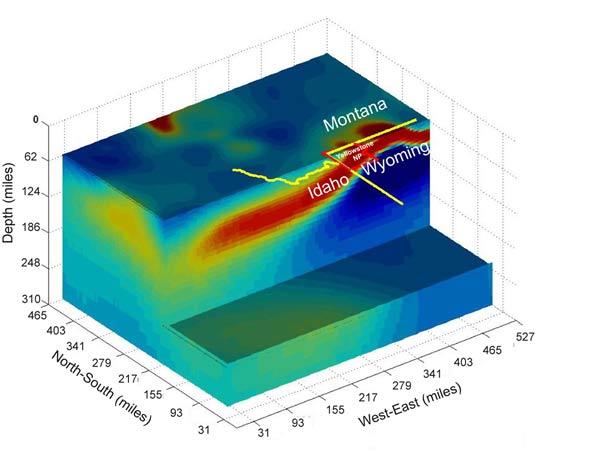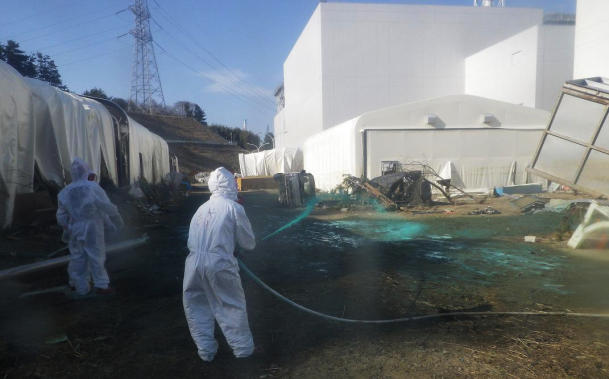
Astronaut Paolo Nespoli took this image of the moon aboard the International Space Station on March 20, 2011, and wrote, "#Supermoon was spectacular from here!"
Sunday (April 17) brings us the first full moon of the new spring season in the Northern Hemisphere, bringing a lunar delight named – in part – for Easter.
The official moment that the moon will turn full is 10:44 p.m. EDT (7:44 p.m. PDT). Traditional names for the full moons of the year are found in some publications such as The Farmers' Almanac and we published the
complete list on SPACE.com earlier this year.
The origins of these names have been traced back to native America, though they may also have evolved from old England or, as Guy Ottewell, editor of the annual publication, "Astronomical Calendar" suggests, "writer's fancy."
Traditionally, the April full moon is known as the "Pink Moon,"supposedly because the grass pink or wild ground phlox is one of the earliest widespread flowers of the spring. Other monikers were the Full Sprouting Grass Moon, the Egg Moon, and – among coastal tribes – the Full Fish Moon, when the shad come upstream to spawn.
['Supermoon' Photos from Around the World]
Easter's full moon twist
The first
full moon of spring, however, is usually designated as the Paschal Full Moon or the Paschal Term. Traditionally, Easter is observed on the Sunday after the Paschal Full Moon. So if the Paschal Moon occurs on a Sunday, Easter is the following Sunday.
Following these celestial rules, we find that Easter can fall as early as March 22 and as late as April 25.
Pope Gregory XIII decreed this in 1582 as part of the Gregorian calendar. So according to the current ecclesiastical rules Easter in 2011 is to be celebrated nearly as late as it can come, on April 24.
Interestingly however, these rules also state that the vernal equinox is fixed on March 21, even though at European longitudes from the years 2008 through 2101 the equinox will occur no later than March 20.
Hence, there can sometimes be discrepancies between the ecclesiastical and astronomical versions for dating Easter.
In the year 2038, for instance, the equinox falls on March 20 with a full moon the next day, so astronomically speaking, Easter should fall on March 28 of that year. In reality, however, as mandated by the rules of the Church, Easter in 2038 will be observed as late as it can possibly come, on April 25!
Adding additional confusion is that there is also an "ecclesiastical" full moon, determined from ecclesiastical tables and whose date does not necessarily coincide with the "astronomical" full Moon, which is based solely on astronomical calculations.
[Infographic: Earth’s Moon Phases Explained]
In 1981, for example, the full moon occurred on Sunday, April 19, so Easter should have occurred on the following Sunday, April 26. But based on the ecclesiastical full Moon it occurred on the same day of the Full Moon, April 19!
So, in practice, the date of Easter is determined not from astronomical computations, but rather from other formulae such as Epachs and Golden Numbers.
Since the beginning of the 20th century, a proposal to change Easter to a fixed holiday rather than a movable one has been widely circulated, and in 1963 the Second Vatican Council agreed, provided a consensus could be reached among Christian churches. The second Sunday in April has been suggested as the most likely date.
Spring Counterpart to the Harvest Moon
Traditionally the
full moon ccurring nearest to the autumnal equinox is traditionally called the Harvest Moon. What sets the Harvest Moon apart from the others is that instead of rising at its normal average of 50 minutes later each day, it seems to rise at nearly the same time for several nights.
But in direct contrast to the Harvest Full Moon, the Paschal Full Moon appears to rise considerably later each night. Below we’ve provided some examples for ten North American cities.
The local moonrise times for April 16, 17, 18 are provided, the middle date being that of the Paschal Full moon.

This table shows moonrise times for April 16-18, 2011, at North American locations.
CREDIT: Joe Rao
Although normally the moon rises about 50 minutes later each night, over this three-night interval for our relatively small sampling, we can see that the rising of the moon comes, on the average, 77 minutes later each night.
A quick study of the table shows that the night-to-night difference is greatest for the more northerly locations (Edmonton, located at latitude 53.6 degrees north, sees moonrise come a full 90 minutes later on average). Meanwhile, the difference is less at southerly locations (at Miami, Florida located at latitude 26ºN, the average difference is about 68 minutes).
The reason for this seasonal circumstance is that the moon appears to move along the ecliptic and at this time of year when rising, the ecliptic makes its largest angle with respect to the horizon for those living in the Northern Hemisphere.
In contrast, for those living in the Southern Hemisphere, the ecliptic at this time of year appears to stand at a more oblique angle to the eastern horizon. As such, the difference for the time of moonrise is noticeably less than the average of 50 minutes per night. In Sydney, Australia, for instance, the night-to-night difference amounts to just 40 minutes.
Some final thoughts
For all who are making preparations for the upcoming Easter holiday, here's something to consider: Last month, had the moon officially turned full just 29 hours 50 minutes later than it actually did, it would have been designated as the Paschal Moon and Easter would have already occurred on March 27.
And while much ado was made about the near coincidence of last month's full moon with perigee (the closest point in its orbit relative to earth) the full moon of April 17 also occurs close to perigee.
In this case, perigee occurs about 21 hours before the moon turns full. Its distance from Earth: 222,506 miles (358,090 kilometers) is less than a half percent more distant than last month’s so-called "Super" moon. So, as was the case last month, the April full moon will appear to loom abnormally large when it rises or sets and will cause the daily range of ocean tides to be more extreme for a few days after full moon.
It’s just not considered a "super" moon. Go figure …
So while this April full moon wins the title of Paschal Moon by a margin of less than 30 hours, it falls short of being called a "Super" moon by just 941 miles (1,515 km); a distance that measures less than half of the diameter of the moon itself!













